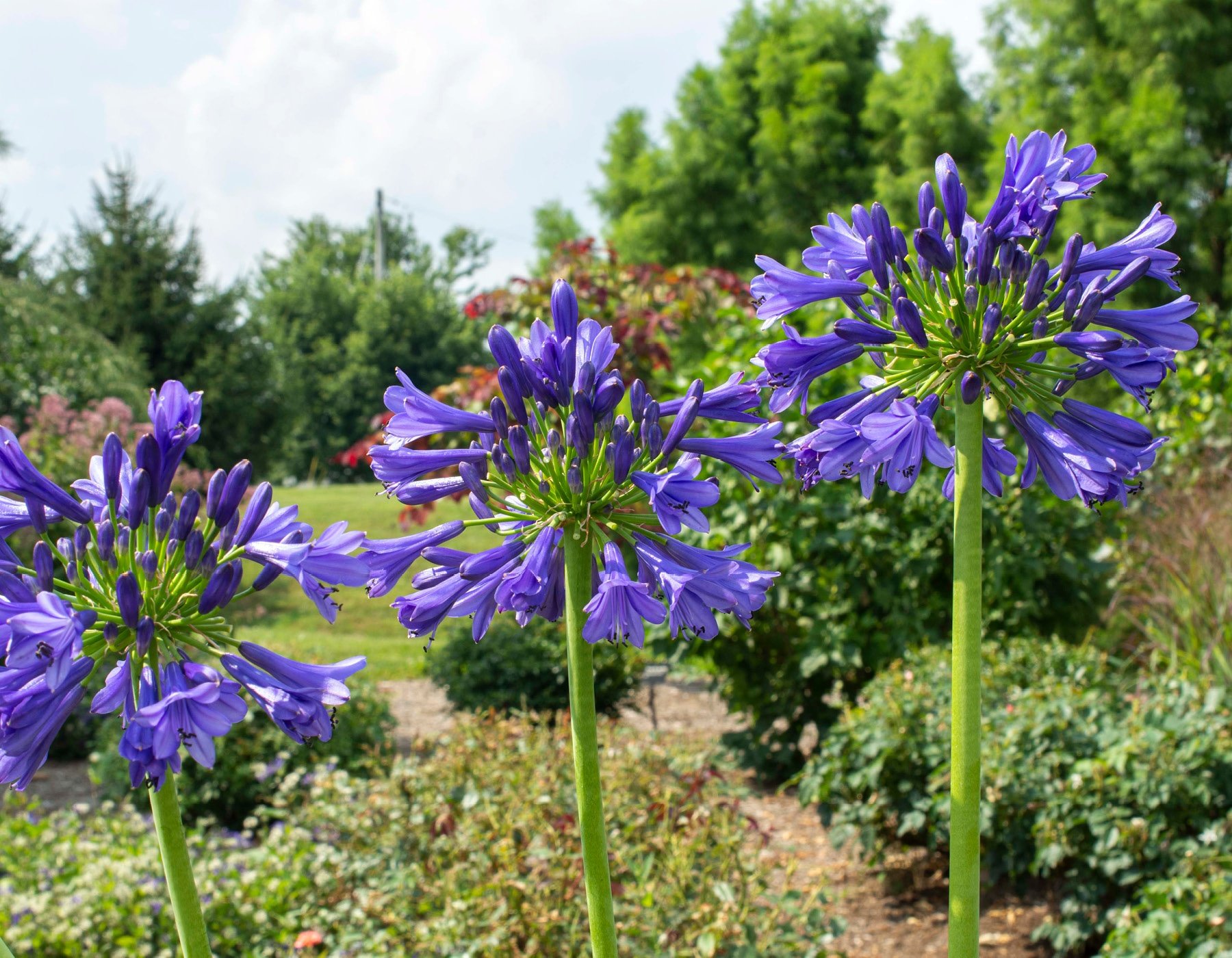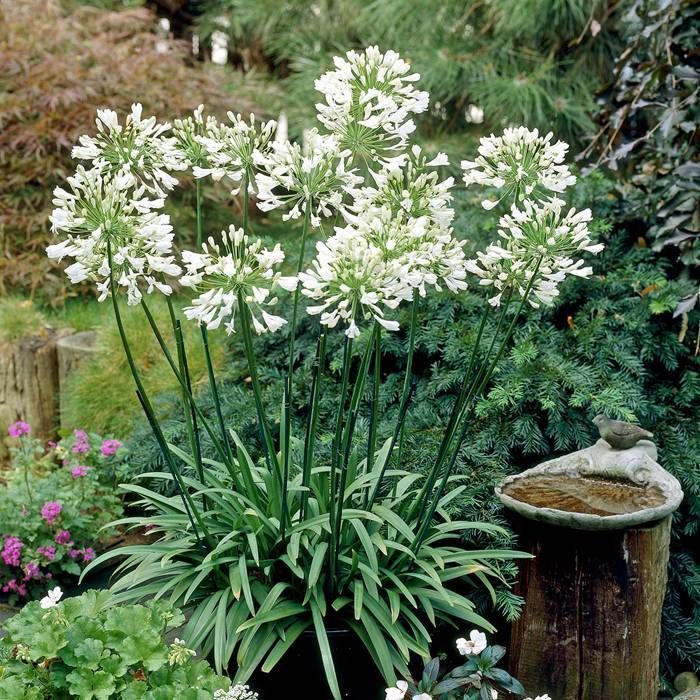Unleashing the Secret to Effective Agapanthus Cultivation: Tips and Tricks for a Flourishing Yard
In the realm of horticulture, growing agapanthus effectively requires a tactical strategy that includes various elements of plant treatment. By understanding the subtleties of agapanthus growing, one can develop an atmosphere where these plants prosper and bloom perfectly.
Growing Agapanthus: Ideal Practices
When planting Agapanthus, correct soil prep work is important for guaranteeing effective growth and advancement of these lovely blossoms. Agapanthus, typically referred to as Lily of the Nile or African lily, grows in well-draining soil with a somewhat acidic to neutral pH degree - Agapanthus. Before growing, it is important to modify heavy clay dirts with organic issue such as compost or peat moss to improve drainage and supply essential nutrients for the plants
To plant Agapanthus, select an area that gets full sunlight to partial shade, as this will advertise healthy and balanced growth and plentiful blooming. Dig a hole two times the diameter of the plant's origin sphere and put the Agapanthus at the same depth it was formerly growing. Gently backfill the opening with soil, pushing down strongly to eliminate any air pockets around the origins.
Water the newly grown Agapanthus thoroughly and remain to keep the dirt evenly wet, especially during the plant's active growing period. Agapanthus. Using a well balanced fertilizer once a month can even more sustain the plant's growth and flowering. By complying with these finest methods for planting Agapanthus, you can create a spectacular display of these captivating blossoms in your yard
Perfect Dirt Issues for Agapanthus
For optimum development and blooming success of Agapanthus plants, making certain the dirt conditions are ideal is essential. Agapanthus favors dirt that is abundant in nutrients, so integrating a well balanced plant food during the growing season can promote healthy and balanced development and vibrant flowers.

Watering and Feeding Tips
To ensure healthy growth and vivid flowers, appropriate watering and feeding methods are vital for effective Agapanthus cultivation. Agapanthus plants benefit from normal watering, particularly during the expanding season. It is advised to water deeply when a week, ensuring the soil is damp but not soaked. Throughout heat or in pots, more regular watering might be essential to prevent the soil from drying out completely.
When it pertains to feeding Agapanthus, a well balanced fertilizer with equivalent parts nitrogen, phosphorus, and potassium can be applied in the spring to promote healthy development and flowering. Slow-release fertilizers are ideal for giving nutrients gradually over a prolonged period. Stay clear of over-fertilizing, as this can result in excessive foliage development at the expense of blossoms.
Additionally, integrating raw material like compost right into the dirt can improve nutrient levels and enhance soil structure, helping in the total health of the Agapanthus plants. By following these watering and fertilizing pointers, garden enthusiasts can guarantee their Agapanthus plants prosper and create spectacular displays of flowers.
Pruning and Deadheading Methods
Proper trimming and deadheading methods play a vital duty in preserving the wellness and appearances of Agapanthus plants, complementing the essential practices of watering and fertilizing for effective cultivation. Trimming Agapanthus entails eliminating invested flower heads, yellowing or dead fallen leaves, and general shaping of the plant to promote better development. Deadheading, the process of removing faded blossoms, not only enhances the site plant's appearance yet additionally urges additional blooming.
When deadheading Agapanthus, it is advisable to snip off the flower stem at the base using sharp, tidy shears. This process redirects the plant's energy from seed production back right into origin and foliage growth, advertising a healthier and much more robust plant. Normal deadheading can extend the blooming period of Agapanthus and protect against self-seeding, which can lead to overcrowding.
In regards to pruning, Agapanthus typically take advantage of a light trim after blooming to clean the plant and encourage fresh growth. Cutting back the spent blossom stems and getting rid of any damaged or dead vegetation assists maintain the plant's vigor and general look. However, it is necessary to stay clear of cutting into the crown of the plant, as this can deteriorate its health and wellness.

Protecting Agapanthus From Pests and Diseases
Carrying out reliable bug and disease management techniques is essential to protecting the wellness and vitality of Agapanthus plants in cultivation. One typical insect that influences Agapanthus is the Agapanthus borer, a caterpillar that passages into the plant, creating damage to the flowers and fallen leaves.
In addition to parasites, Agapanthus are prone to conditions such as root rot and fungal fallen leave spots. These issues can typically be protected against by guaranteeing appropriate water drainage and staying clear of this hyperlink overwatering. Influenced parts of the plant must be immediately removed to protect against more spread if indicators of disease show up. Fungicides might also be made use of as a therapy action, following the supplier's guidelines meticulously. By remaining alert and resolving pest and illness issues immediately, garden enthusiasts can help their this post Agapanthus flourish and grow.

Conclusion
To conclude, effective cultivation of agapanthus calls for correct planting methods, suitable dirt problems, sufficient watering and fertilizing, routine trimming and deadheading, and security from diseases and insects. By adhering to these methods and tips, gardeners can make certain a growing yard loaded with attractive agapanthus flowers. Agapanthus. Bear in mind to preserve constant treatment and focus to information to advertise the health and wellness and durability of these spectacular plants
When growing Agapanthus, appropriate soil prep work is vital for making certain effective growth and growth of these beautiful flowers.Water the newly planted Agapanthus thoroughly and continue to maintain the dirt evenly wet, especially throughout the plant's active expanding season.For ideal growth and growing success of Agapanthus plants, making certain the soil conditions are optimal is essential. When transplanting or growing Agapanthus, make sure the soil is well-prepared to provide the needed structure for the plants to develop themselves effectively. One usual pest that impacts Agapanthus is the Agapanthus borer, a caterpillar that tunnels into the plant, causing damage to the blossoms and fallen leaves.